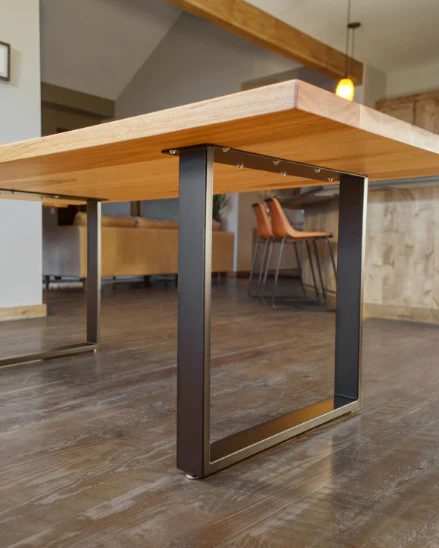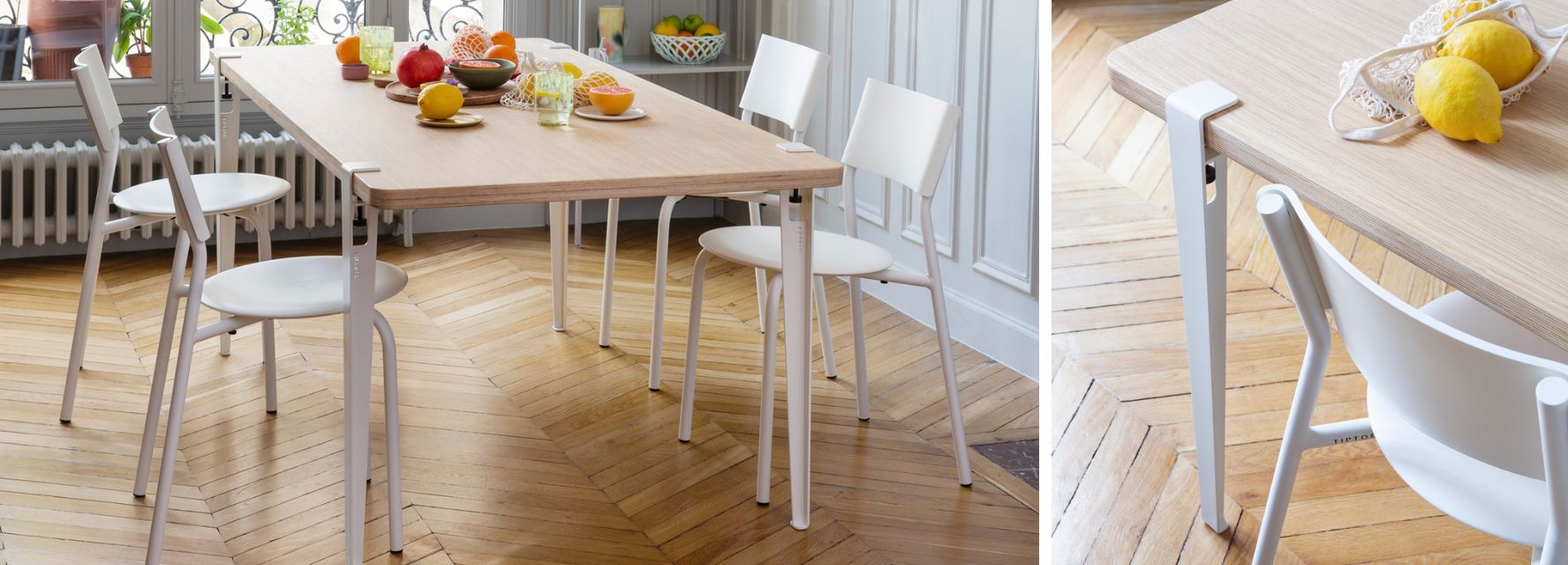Affordable and High-Quality Dining Room Table Legs for Every Budget
Affordable and High-Quality Dining Room Table Legs for Every Budget
Blog Article
From Conventional to Modern: Find the Ideal Dining-room Table Legs for Your Design
The selection of eating room table legs plays an essential duty in specifying the overall character of your space, connecting the space between typical craftsmanship and modern-day appearances. While classic styles such as cabriole and turned legs evoke a sense of timeless elegance, contemporary designs like barrette and geometric alternatives provide a possibility for striking aesthetic rate of interest. Evaluating the best equilibrium in between these designs calls for a nuanced understanding of your existing decor and personal taste. As you consider these elements, the concern stays: exactly how can you seamlessly incorporate these diverse leg designs to develop a harmonious dining experience?
Comprehending Table Leg Styles
The selection of dining area table leg styles can considerably affect both the aesthetics and functionality of the space. Each leg design adds special practical features and visual aspects, satisfying diverse design choices and usage requirements. Recognizing these designs is critical for picking the best table that aligns with your general interior layout vision.
For circumstances, conical legs offer a clean, timeless appearance that can enhance a room's beauty, while stand bases offer security and make the most of legroom, making them perfect for smaller sized rooms. Hairpin legs, a hallmark of mid-century modern-day style, introduce an industrial flair, enabling for a ventilated, open feel. Similarly, trestle legs stimulate rustic appeal, supplying robust assistance and a feeling of timelessness.
Furthermore, the choice of materials plays a substantial role. Wood legs can bring warmth and structure, whereas steel choices typically share a streamlined, modern ambiance. Ultimately, comprehending table leg styles is essential for creating a natural eating area that reflects individual style while ensuring functionality and convenience. By thoughtfully thinking about these elements, you can boost both the functional and aesthetic appeal of your eating space.
Standard Table Leg Options
When choosing dining-room table legs, conventional options typically embody timeless elegance and craftsmanship. These designs reflect a rich heritage and a commitment to quality, making them optimal for those that value classic aesthetics.
Among the most renowned conventional leg designs is the cabriole leg, identified by its stylish curved form. This design frequently includes attractive makings and is most generally found in Queen Anne and Chippendale furniture. One more popular choice is the turned leg, which flaunts a series of smooth, rounded shapes that provide a classic appearance while keeping security.
Furthermore, the straight leg, while easy, offers a basic and sturdy structure that can blend effortlessly with a variety of tabletop designs. For those attracted to ornate detailing, claw-and-ball feet legs evoke a feeling of magnificence and can work as a stunning prime focus in any type of eating room.
Lastly, stand bases, although not purely legs, give a different conventional option that enables sufficient legroom and can be perfectly carved. Each of these conventional leg designs adds to the overall ambiance of a dining room, weding feature with aesthetic appeal.

Modern Table Leg Layouts
Modern table leg styles use a varied variety of designs that highlight innovative materials and tidy lines. These styles frequently focus on capability while working as striking prime focus within a dining room. Minimalist aesthetic appeals are widespread, with legs crafted from products such as metal, glass, and engineered wood, which add to a airy and contemporary feel.
One popular style is the hairpin leg, characterized by its slim, conical framework that provides security without frustrating the tabletop (dining room table legs). This style is frequently found in mid-century modern-day furniture and can easily complement different table forms. An additional trend is using geometric shapes, where legs may tackle asymmetrical or angular types, adding visual interest and a touch of artistry

Mixing Styles for Special Rooms
Usually, property owners look for to develop unique dining rooms that mirror their individual style by mixing numerous style elements. This technique enables the incorporation of diverse appearances, causing an unified yet unique environment. Coupling a rustic wood table with sleek, contemporary metal legs can develop an appealing contrast that raises the area's total charm.
In addition, integrating vintage table click over here legs with modern tabletops can stimulate a feeling of history while preserving a contemporary sensibility. Such mixes not just showcase individual preference but also motivate creative thinking, enabling home owners to curate an area that feels both individual and welcoming.
Shade plays an essential function in this blending procedure; picking table legs that match or comparison with the existing color design can enhance aesthetic interest. Whitewashed legs can soften the boldness of a dark table surface area, developing a well balanced visual.
Tips for Selecting the Right Legs
Selecting the right table legs is vital for attaining both functionality and aesthetic appeal in your eating area. Begin by taking into consideration the overall style of your space. Traditional setups take advantage of legs that feature intricate carvings or transformed designs, while modern spaces might require smooth, minimalist designs.
Following, analyze the height and security of the legs. dining room table legs. Conventional table vary between 28 to 30 inches in height, so ensure the legs complement this dimension for comfort. In addition, durable materials, such as hardwood or steel, can enhance stability and longevity
Review the leg form also-- choices consist of directly, tapered, or pedestal designs. Straight legs provide a traditional look, while conical legs can add a touch of sophistication. Pedestal bases supply sufficient legroom and are ideal for smaller rooms.
Verdict
In recap, selecting the excellent dining space news table legs calls for mindful consideration of both typical and modern-day styles. Conventional options such as cabriole and turned legs use classic sophistication, while contemporary styles like barrette and geometric shapes supply a contemporary touch. By balancing leg style, height, and material with the total decoration, a cohesive and inviting environment can be accomplished. Inevitably, the picked table legs need to show the preferred visual, enhancing the eating experience within the space.
The range of eating room table leg designs can dramatically affect both the looks and performance of the room. Inevitably, recognizing table leg designs is necessary for creating a natural dining area that reflects individual design while ensuring usefulness and convenience.One of the most iconic typical leg styles is the cabriole leg, defined more by its elegant rounded form. Straight legs supply a classic look, while conical legs can include a touch of sophistication.In recap, selecting the perfect dining room table legs calls for cautious consideration of both modern-day and conventional styles.
Report this page